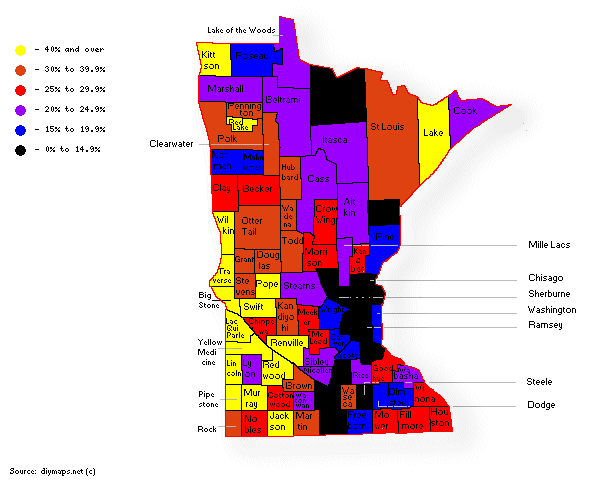New data shows how Minnesota’s economy is changing
Policymakers in St. Paul all too often fail to see much beyond highways 494 and 694. One thing that we did in out recent report, The State of Minnesota’s Economy: 2017, was took look a little further afield.
Here, we take a look at Minnesota beyond the Metro. We look at employment growth, per capita incomes, and GDP for Minnesota’s counties. For comparison, we also look at MSAs in neighboring states.New data from the Bureau of Economic Analysis allows to update this for 2016.
Employment Growth
Figure 1 shows the change in Total Employment in Minnesota’s counties from 2000 to 2016. The strongest employment growth has been found on a North West to South East axis along the Mississippi and along the St. Croix River, close to the Twin Cities. In Greater Minnesota, such as along the Minnesota River valley, however, the number of jobs has fallen. Scott, Wright, and Sherburne were the fastest growing counties in terms of employment, while the greatest contraction was found in Norman, Faribault, and Koochiching.
Figure 1 – Change in Total Employment, 2000-2016, %

Source: Bureau of Economic Analysis and Center of the American Experiment
Per Capita Incomes
Personal Income remains much higher in Hennepin and Carver counties than it does elsewhere in the sate. But this gap is closing. As Figure 2 shows, between 2000 and 2016, the biggest gains in per capita Personal Income were found in Swift, Lac qui Parle, and Yellow Medicine counties. The levels here remain some around half of those in Hennepin and Carver, but because of the higher rates of change, Yellow Medicine has gone from 54.3% of Hennepin’s level in 2000 to 79.4% in 2016.
Figure 2 – Change in Real per capita Personal Income, 2000-2016, %

Source: Bureau of Economic Analysis and Center of the American Experiment
The most substantial gains have occurred in the agricultural southwest portion of Minnesota. By contrast, growth has been lower in the urban counties. This might seem to suggest convergence between richer and less well off areas. While this might be what we see in some cases, this illustrates that there is nothing automatic in the process. The gains in the southwest of the state have been driven by high agricultural prices over this period. Meanwhile, there are counties in the north of the state, which were among the less well off in 2000, which have continued so as their growth rates have been low.
John Phelan is an economist at the Center of the American Experiment.